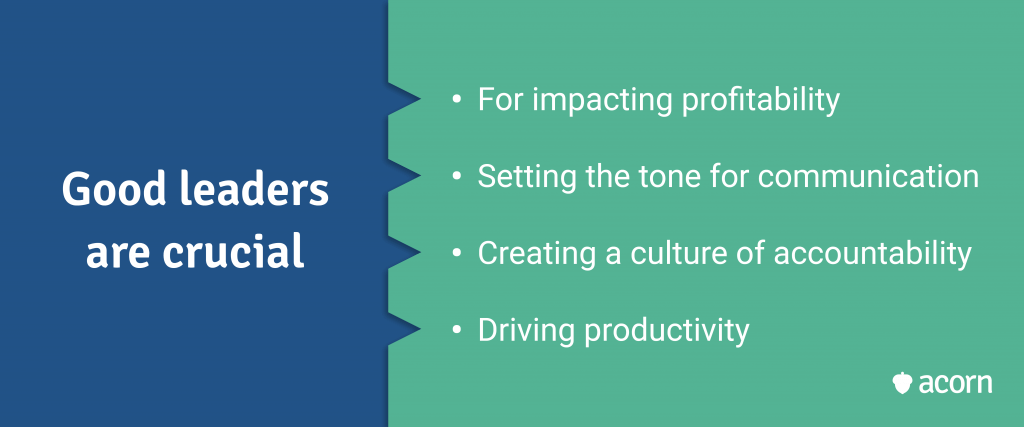We Did a Deep Dive into Engaging Learners, and Here’s Why You Should Do It Too
Keeping employees engaged is no easy feat. Training and development is just one of the ways to ensure employees are engaged with their work, though it too comes with its own challenges.
Employee development takes time and effort to be effective—but the more you nurture it, the stronger your organisation becomes both now and in future. So, what are the ways in which employee development can be designed, nurtured and maintained in order to keep employees engaged?
The link between employee development and employee engagement
Let’s start with what employee development is not.
- It’s not just about developing learning and development strategies.
- It’s not just mandatory employee training.
- It’s not just performing annual reviews.
- It’s not a short-term initiative, nor should it be a one-off.
At the highest level, employee development is the process of improving and refining employees’ existing skills while developing new ones that support organisational objectives.
Consider the cost of an employee with limited capabilities and/or limited interest in developing those capabilities. No doubt they are costing you time in reduced efficiency, productivity and output, as well as negatively impacting the culture, their co-workers’ time and quality of output. Letting them go can cost almost as much as keeping them, whereas investing in developing their capabilities can negate these issues and improve employee retention rates for you.
Investing in employees means investing in your human capital, a neat term that places value on habits, knowledge and attitudes as much as tangible assets like revenue or property. Rather than seeing people as a commodity or resource, though, human capital focuses on investment. If you begin to view employee development as an investment in your people, then it’s easy to understand why it’s important and how it will benefit your organisation.
We designed the performance learning management system (PLMS) specifically to enable organisations to make meaningful investments in their people. Acorn PLMS is the only solution the matches learning to performance, guiding learners step by step to master the skills, knowledge, behaviours, tools, and processes (aka capabilities) that’ll turn them into impact players. That’s by way of reporting that proves true behaviour change, not just learning completions (see: employee development is not just about mandatory employee training above).
The importance of employee development
Another factor to consider is the link between business benefits and benefits for your employees. Developing capabilities gives employees confidence in their abilities. When an employee is confident, they’re not likely to struggle with everyday tasks, meaning they’ll take less time to complete them, are more likely to put out a higher quality of work, and will produce things in a more efficient manner.
Plus, engagement and productivity are natural allies of innovation and adaptability, meaning your organisation has a better foundation for future success and growth.
The benefits of employee development
It’s important, yes. But exactly how does employee development empower organisations and employees? When executed correctly, it can fortify the employee lifecycle, business outcomes, company culture, and reputation.
Improved performance
Remaining competitive is vital to an organisation’s survival at a minimum and its success at best. Two reasons we see for imperfect or inconsistent employee performance are budgets for development are too restricted and annual reviews are enough (they’re not).
Poor performance often occurs when an employee isn’t entirely sure of one or all of these three things:
- What they’re supposed to do
- How they’re supposed to do it
- Why they are doing it.
Organisational performance is powered by the way work gets done. How work gets done has traditionally been determined by skills taxonomies, which expire quickly and are rarely definitively linked to business strategy.
By way of capabiliites, you’ll find what is deemed a marker of good performance becomes universal rather than unilateral—generating consistent output and standards of work across each employee, team, and department. That’s after you derive them from business strategy. Because, yes, capabilities break down strategy by the skills, knowledge, behaviours, tools, systems, and processes necessary to deliver on it.
All of which gives employees a clear roadmap to follow to reach their full potential, and saves time in areas you might not have considered, such as the duplication of effort that comes from time spent correcting mistakes or redoing flawed work.
Adaptability
The world around us is constantly changing in response to massive forces of business called megatrends (think: aging populations, big data, sustainability and political volatility). What once worked isn’t a certain win now and as new and unexpected situations continue to be thrown up, it’s more important than ever for employees to be adaptable.
And adaptability is no longer a simple soft skill. It’s a business capability, which means your organisation needs it to stay agile.
Herein lies the real benefit of adaptability: the ability to learn and unlearn. An adaptable employee is largely unfazed by sudden turns of events. They can respond effectively and quickly and mobilise others to resolve problems, too, making adaptability a true leadership capability. Thinking metacognitively gives an employee better self-evaluation and critical thinking skills, which means their reactions to events will be flexible and contextual (a telling sign of innovation) rather than rigid and habitual.
Learning culture
A continuous learning culture has two distinct benefits.
- It’s highly attractive to potential employees, demonstrating you put your money where your mouth is with career development.
- Continuous cultures are self-sustaining—given the right mechanisms, that means more bang for your L&D, HR and OD buck.
And given as little as 20% of your workforce can be demonstrating truly effective learning behaviours at work, while organisations with learning cultures are 30% more likely to be market leaders, you stand to gain win or lose a lot here.
The right mechanisms and triggers for learning in the flow of work also strengthen business architecture. Capability academies, as an example, act as learning repositories for functions or departments, but only nurture truly mission critical capabilities. In others words: learning is tailor-made for the strategic needs of the organisation and individual performance needs of the employee.
Increased retention
The longer an employee stays with an organisation, the more well versed they are in culture and expectations, and the stronger their investment in contributing to organisational success. Think about the skills and knowledge they make take to a competitor should they leave your organisation, and the interruption to output and team efficiency and dynamics that job vacancies incur.
The simplest way to retain an employee is to train them. Rather than looking externally for capabilities you might be missing (and incurring the costs of recruitment in the process, while also taking a gamble on how relevant those capabilities may be to your strategic landscape), it’s much more cost-effective to develop those skills internally.
Reskilling is also much easier than training an entirely new employee; an existing one already understands your ethos, mission, and values, so is better prepared to contextualise whatever new responsibilities and capabilities they are learning. We’ll add here that lateral and stretch assignments not only broaden business knowledge for individuals, but widens your talent pool with more mature and therefore freely available capabilities.
Leadership pipeline
Developing great leaders is one of the biggest challenges in the modern workforce.

But finding the right person to lead is difficult because no longer does seniority equal promotion, nor does someone with awards and merit against their name necessarily have the leadership capabilities needed to manage people.
Building leadership capability unique to your organisation creates a bench of talent that is trained to:
- Spot and nurture emerging talent (ensuring the longevity of your pipeline)
- Drive strategic alignment and execution through their teams
- Lead a resilient workforce equipped to innovate and adapt (see: adaptability above) in the face of volatile, uncertain, or adverse changes.
And perhaps the biggest advantage is that you are outlining what leadership capabilities are key to your strategic goals. With that understanding, potential leaders have a better understanding of how their role contributes to the business and interacts with others, and it can save the cost (and risk) of hiring externally.
How to develop an employee development plan
As one of the more influential drivers of employee engagement, learning and development is important. But it’s not impossible to offer personalised training for your entire workforce. If anything, it’s remarkably easier than you think—if you follow a few key steps, that is.
Define organisational goals
Assessing your current workforce against long-term goals is vital for determining the crucial capabilities you’re missing. To make training truly strategic, you need to start with what the business needs and/or is lacking, in order to prove tangible impacts at the other end of training. (If you need stats, doing this means you can boost your share of the market by 17% and ensure your organisation is 58% better prepared for the future).
Capability assessments generally come in three forms.
- Self-assessments, where the employee evaluates their own abilities against the capability needs of their role.
- Manager assessments, where the manager evaluates the employee on the capability needs of their role.
- Subject matter expert assessments, used for niche or highly technical job verticals and capabilities like software engineering or legal.
It’s best to do this proactively, so that capability gaps don’t fester and create nasty surprises. Proactive learning needs analyses positions L&D as a strategic business partner, and enables you to offer highly personalised development opportunities to employees. Again, this is something that Acorn PLMS empowers you to do with capability discovery, assessment, and mapping.
The power of interest capabilities
Forcing employees to complete mandatory training falls short on two inherent qualities you need for engagement: Interest and usefulness. It also makes it a wholly impersonal activity, negating any personal motivation employees may have.
Acorn PLMS offers interest capabilities alongside capabilities core to job roles and business plans. Essentially, they are self-selected by learners who have an interest in developing that capability. While they may not be directly related to immediate performance needs, interest capabilities feed self-motivation and give your employees opportunities to develop skills, knowledge, and behaviours that are still key to your organisation, just in other areas. (Think about your T-shaped professionals, here.)
Create on-the-job opportunities
Even we extole the need for learning in the flow of work. Learning moments move the needle quicker by giving employees immediate context in which to solve problems and build confidence with new knowledge or skills. The case-by-case basis of on-the-job training gives employees a chance to contextually apply new capabilities, which creates a basis of experience they can build from in future circumstances.
It’s best to pair the practice of on-job-training with the theory of online courses. Treat them as co-dependent; one provides the opportunity to correct performance issues in real-time, while the other offers the immutable handbook for how to perform. Remember that if nothing else, capabilities definitively outline what good performance looks like.
Evaluate & adjust
Training evaluation answers questions like:
- Has training been delivered effectively?
- Has employee training had a tangible impact on performance?
- Can you prove training ROI?
You want to go beyond general engagement surveys, though they are important to ascertaining learner satisfaction. Look to learning and performance impacts on business, so you can determine training efficacy.
Continuous evaluation means that you’re always optimising on L&D processes, and ensuring that training is having a positive and definitive impact on business outcomes. That means you’re always addressing areas of strategic weakness, and creating a sustainable cycle of learning that starts and ends with assessment.
5 strategies to improve employee development, now
Whether you already have an employee development plan in place or you’re only just starting to design one, there are ways to immediately improve your offering and reap some short-term benefits.
1. Train from day one
You may have heard of this little thing called onboarding. If you want new employees to last more than six months, you need to give them the tools and resources they need to do their job well from the day they start. This sets the tone for the rest of their careers with you. Consider that remote workers don’t get the lay of the land that those working in-office do and you’ll understand why it’s important to have a central repository for knowledge and training.
2. Train your managers
We’ve talked many times about why it’s important to train your managers. (See here, here and here.) Part of effective professional development training is ensuring you have managers who lead by example and champion employee development in their teams. Those aforementioned one-on-ones? An easy and almost instant way for your managers to ascertain:
- Employees most recent ‘wins’
- Challenges being faced
- Individual and team morale
- Job satisfaction
- How employees view leadership.
3. Encourage collaboration
Employee development needn’t be a formal training activity. On-the-job development is often more beneficial; employees can see in real time the context, environment and scenarios in which new skills and behaviours are necessary. Implement cross-departmental collaboration to encourage employees to learn about other parts of the business, different pain points that could affect their work, and create healthier dynamics.
4. Strengthen soft skills
The term ‘soft skills’ itself implies they’re not that important, but soft skills are actually those that really take someone from an average worker to a future leader within your organisation. Would you say problem solving, adaptability, self-reflection, conflict resolution and communication aren’t necessary? In this age of automation, the critical skills of the future are not technical but behavioural—and they’re always changing in scope, meaning your internal culture and lines of communication are as well. Focusing on core relationships will help create a more collaborative and creative community.
5. Invest in personal development
Wellbeing shouldn’t be a taboo word. Positivity inspires productivity, and this is the kind of environment where employees want to come to work. Mental illness is the leading cause of sick days in Australia and 1 in 6 employees will experience day-to-day symptoms associated with poor mental health, like worry and bad sleep. If your employees don’t feel their best, they certainly won’t perform their best. Offering mental health days, counselling services, corporate gym memberships or even just sit-stand desks are additional ways to engage and care for your employees’ mental and physical health.
Key takeaways
Learners aren’t really asking for much. There’ll be varying degrees of motivation and investment from all your employees, but generally speaking, they want training that aligns with and accelerates their career goals.
Smart organisations use this desire to their advantage. Truly strategic learning and development involves employees in the development process, by way of self-assessments, interest capabilities, and on-the-job training, to create intrinsic pockets of motivation. Offering tailored training at scale isn’t impossible with the right learning solution, either. A performance learning management system puts capability assessment at the forefront, middle and end of training, ensuring that learning is never just for learning’s sake, but rather moving the needle on employee and business performance.
Related Reads on This Topic

What is Employee Turnover and How You Can Calculate Your Employee Turnover Rate
Employee turnover is the natural cycle of vacancy and recruitment in a business. But how do you calculate it, and why should you…

How to Develop a Learning and Development Strategy for Impactful Employee Training
An effective learning and development strategy fosters professional growth and upskilling. Find out how this can reshape your business today…

Why You Should Use a Leadership Capability Framework When Developing Leaders
A leadership capability framework is designed to outline the skills, knowledge, and abilities required to perform a leadership role…